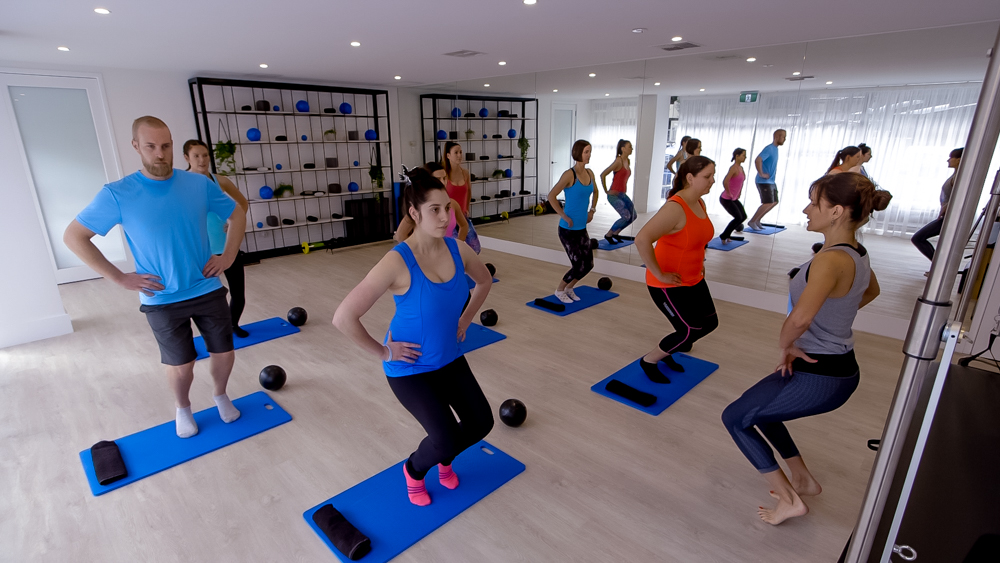How is sitting really affecting your health?
It's a new year. A time for positive change. Although it's tempting to slip back into old habits, we should be mindful of the harmful effects of our seated lives. Unfortunately, for many of us, sitting in front of a computer is the reality for much of the time we spend at work, but a growing body of research is showing that sitting really is a serious risk to our health.

So, how is sitting really affecting your health? According to the world health organization, not being active enough is 1 of the 10 leading risk factors for deaths globally, and 25% of adults worldwide are not active enough. In richer countries, such as ours, this percentage is even higher... Obviously, our working lives can contribute to many hours of sitting during the day, however; time spent travelling to and from work in a car or on public transport adds a few more seated hours to our day, not to mention leisure time in the evenings and weekends spent in front of the TV.... Excessive sitting has been linked to a wide array of illnesses including diabetes, the metabolic syndrome and cardiovascular disease (de Rezende et al., 2014; Ford & Caspersen, 2012; A.A. Thorp et al., 2011). As well as these cardio-metabolic risks, links have been also made between sedentary behaviour (ie. sitting) and certain types of cancer including colon, endometrial and lung cancer risk (Schmid & Leitzmann, 2014) as well as breast cancer (Shen et al., 2014; Zhang, Jiang, Wu, & Jiang, 2014). Musculoskeletal pain is also linked to sitting, sustained static postures such as those we adopt in front of our computers load our spine in unfavourable ways and can contribute to neck and back pain. Most physios in private practice will spend a lot of their day treating musculoskeletal pain experienced by office workers who are desk-bound. The list goes on.... There is also evidence to suggest that sedentary behaviour is linked to higher levels of depression (Zhai, Zhang, & Zhang, 2015) than a more active lifestyle. So how do we get around this problem of excessive sitting that is so prevalent in our society? How much physical activity should we be aiming for? The following guidelines are described by the World Health Organisation for adults aged between 18-24
- At least 150 minutes of moderate-intensity physical activity throughout the week, or do at least 75 minutes of vigorous-intensity physical activity throughout the week, or an equivalent combination of moderate- and vigorous-intensity activity.
- For additional health benefits, adults should increase their moderate-intensity physical activity to 300 minutes per week, or equivalent.
- Muscle-strengthening activities should be done involving major muscle groups on 2 or more days a week.

As well as incorporating structured exercises into your working week, don't underestimate the importance of incidental exercise. Choices such as taking the stairs rather than the lift or walking to deliver a message to a colleague at work rather than emailing them, can all contribute to a healthier work life. A sit-to-stand desk is an excellent option to vary your posture throughout the times during your working day you need to be in front of your computer.
Here's wishing you all a happy new year!
2019 COURSE SCHEDULE - VIEW NEW DATES HERE
References:
- de Rezende, L. F., Rodrigues Lopes, M., Rey-Lopez, J. P., Matsudo, V. K., & Luiz Odo, C. (2014). Sedentary behavior and health outcomes: an overview of systematic reviews. PLoS One, 9(8), e105620. doi:10.1371/journal.pone.0105620
- Ford, E. S., & Caspersen, C. J. (2012). Sedentary behaviour and cardiovascular disease: a review of prospective studies. International Journal of Epidemiology, 41(5), 1338-1353. doi:10.1093/ije/dys078
- Schmid, D., & Leitzmann, M. F. (2014). Television viewing and time spent sedentary in relation to cancer risk: a meta-analysis. Journal of the National Cancer Institute, 106(7), dju098. doi:10.1093/jnci/dju098
- Shen, D., Mao, W., Liu, T., Lin, Q., Lu, X., Wang, Q., . . . Wijndaele, K. (2014). Sedentary behavior and incident cancer: a meta-analysis of prospective studies. PLoS One, 9(8), e105709. doi:10.1371/journal.pone.0105709
- Thorp, A. A., Owen, N., Neuhaus, M., & Dunstan, D. W. (2011). Sedentary behaviors and subsequent health outcomes in adults a systematic review of longitudinal studies, 1996-2011. Am J Prev Med, 41(2), 207-215. doi:10.1016/j.amepre.2011.05.004
- World Health Organisation. ( 2016, June). Physical Activity, retrieved from http://www.who.int/mediacentre/factsheets/fs385/en/
- Zhai, L., Zhang, Y., & Zhang, D. (2015). Sedentary behaviour and the risk of depression: a meta-analysis. Br J Sports Med, 49(11), 705-709. doi:10.1136/bjsports- 2014-093613
- Zhang, D., Jiang, W., Wu, Y., & Jiang, X. (2014). Re: Television viewing and time spent sedentary in relation to cancer risk: a meta-analysis. Journal of the National Cancer Institute, 106(11), dju303. doi:10.1093/jnci/dju303
